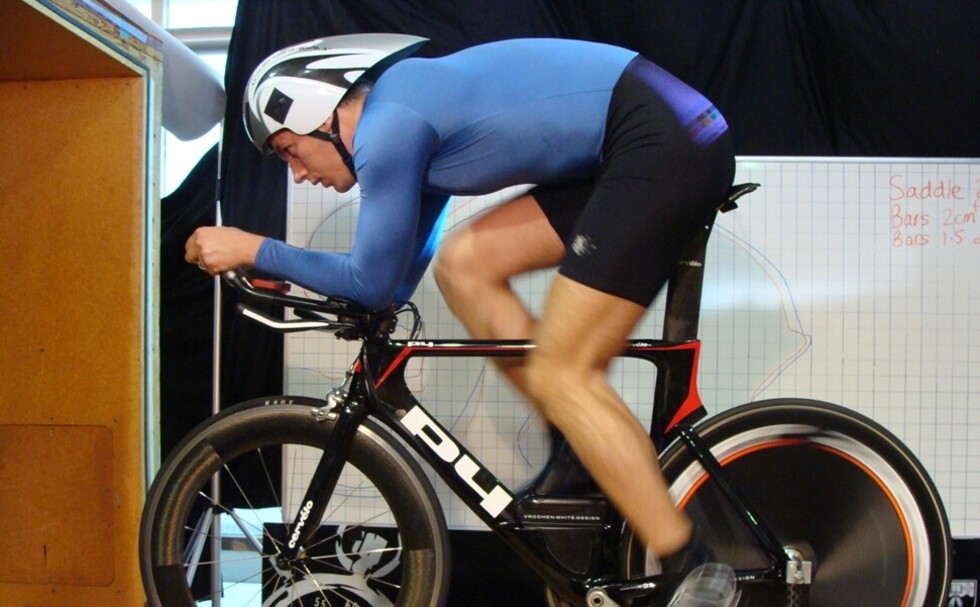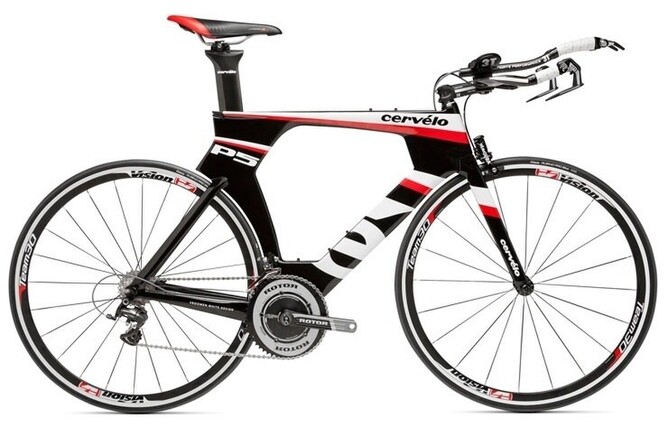The long awaited Cervelo P5s have actually now landed in the country. The limited numbers so far produced (128 54s and 56s) mean that NZ only received 3 bikes.
Here is a close look at some of the details that get left out of press release based reviews. Lots of pictures rather than just the excessive verbiage I usually indulge in.
For my thoughts on the information that was released during the launch see this article. Today I’ll be addressing some other elements including those that are only apparent with the bike in hand.
Weight
At 1779g this is not a light frame, although the 393g for the fork is quite respectable. Of course weight is unimportant for TT/Tri so we’re not too concerned on that front. However, for the members of our cycling community who think anything over 7kg is a boat anchor – this may not be the best option for your new light TT bike.
Sizing
The P5 abandons the long/low philosophy that Cervelo have been known for – following the recent trend amongst TT bike manufacturers of taller headtubes to suit the Triathlon market.
The chart to the right is a stack-reach plot showing how the P5 has grown upwards and reduced reach compared to the P4.
Also notable that the sizing line is very similar to the Trek Speed Concept – clearly Cervelo paid attention to Treks statement that Triathlon was the fastest growing market segment for them…
Dimensions
One of my pursuits in recent years has been measuring the tubing dimensions on TT bikes. In this way I could compare the features of bikes for which there was no wind tunnel data (ie ‘bike x has dimensions and shaping in common with the P3 so is likely fast, whereas bike y has shaping and dimensions in common with a brick so it’s probably slow’). This pursuit has drawn a few strange looks in transition areas and bike shops when I pull out my calipers and ask if they’d mind me taking some measurements.
With the P5 it’s very interesting to compare these measurements to the P4. Firstly – the similarities:
The fork legs appear to be the same as the P4 in dimensions and shaping
The seatpost appears to be a truncated version of the old seatpost rather than using the UCI legal alternative post that was produced for the P2/3/4
The seatstays have the same dimensions
And the differences:
The downtube depth is mandated at 80mm by the UCI, the P4 was slightly less to allow a 26mm width. The P5 has widened by 2mm, presumably for easier (cheaper) manufacture
The headtube is 38mm at narrowest compared to 35mm on the P4. However, the massive gusset behind the headtube is 160mm for the P5 vs 100mm on the P4 – which is a ratio of 4.2 compared to 2.9. So the P5 HT will be stiffer and probably faster
I can’t really tell where to measure the seat tube given there are no straight sections. The gusset gives a ratio well in excess of 4.0 compared to the 2.9 of the upright section on the P4 and P3
While the fork legs are the same, they’re now further apart at the crown, this will be to avoid negative interference effects with the new generation of wide wheels.
Overall the P5 shows another level of shape manipulation beyond the P4 and I’m happy to believe the assertions that it is both faster and better to ride.
Gallery
Rather than writing endlessly about the other things I’ve noticed I’ll leave it to the pictures below and the captions that accompany them.
And as a final note – this is the first ride report I received from one of my clients
Overall the bike was super smooth, ride comfort was amazing, just like you said it would be, I was quite surprised, felt like I had flat tyres it was so smooth, but I had put 110psi in so I know it wasn’t that.

